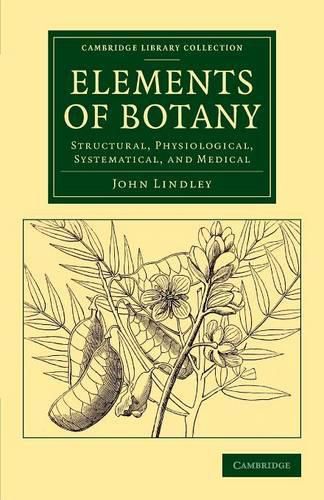Readings Newsletter
Become a Readings Member to make your shopping experience even easier.
Sign in or sign up for free!
You’re not far away from qualifying for FREE standard shipping within Australia
You’ve qualified for FREE standard shipping within Australia
The cart is loading…






Employed early in his career by Sir Joseph Banks, the botanist John Lindley (1799-1865) is best known for his recommendation that Kew Gardens should become a national botanical institution, and for saving the Royal Horticultural Society from financial disaster. As an author, he is best remembered for his works on taxonomy and classification. A partisan of the ‘natural’ system rather than the Linnaean, Lindley published this 1841 work, the fourth edition of his Outline of the First Principles of Botany, under a new title to emphasise not only that it was ‘much extended, and, it is hoped, improved’, but also that it was a textbook for students of ‘structural, physiological, systematical, and medical’ botany. He defines the different elements of a plant, and provides a checklist for identification of plant families, before discussing the various ‘natural’ systems of classification, including his own, and the different practical uses of plants.
$9.00 standard shipping within Australia
FREE standard shipping within Australia for orders over $100.00
Express & International shipping calculated at checkout
Employed early in his career by Sir Joseph Banks, the botanist John Lindley (1799-1865) is best known for his recommendation that Kew Gardens should become a national botanical institution, and for saving the Royal Horticultural Society from financial disaster. As an author, he is best remembered for his works on taxonomy and classification. A partisan of the ‘natural’ system rather than the Linnaean, Lindley published this 1841 work, the fourth edition of his Outline of the First Principles of Botany, under a new title to emphasise not only that it was ‘much extended, and, it is hoped, improved’, but also that it was a textbook for students of ‘structural, physiological, systematical, and medical’ botany. He defines the different elements of a plant, and provides a checklist for identification of plant families, before discussing the various ‘natural’ systems of classification, including his own, and the different practical uses of plants.